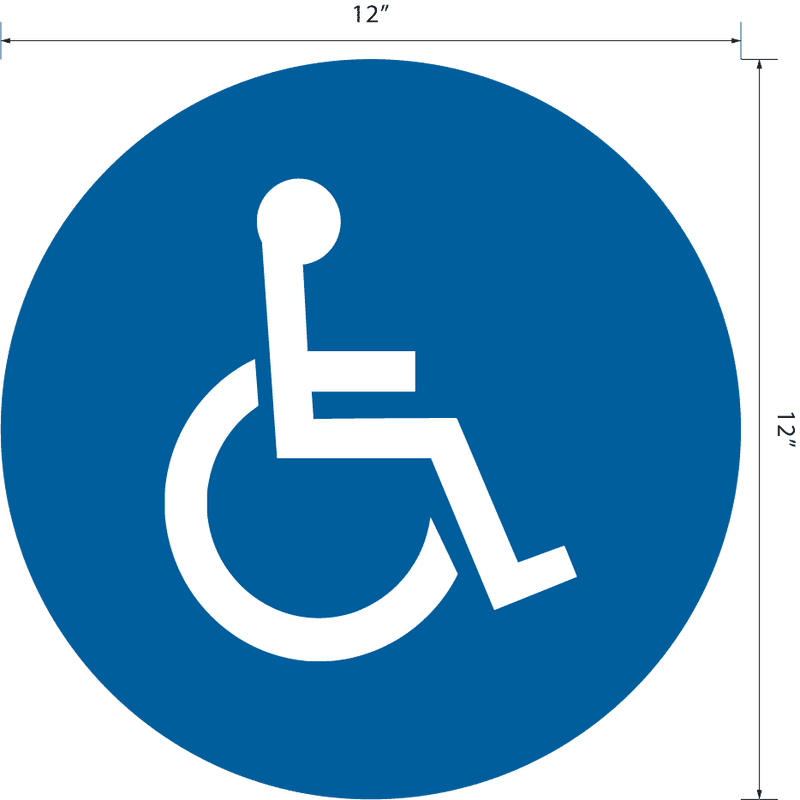Checking Out the Secret Functions of ADA Indications for Improved Ease Of Access
In the world of accessibility, ADA indicators serve as silent yet effective allies, guaranteeing that rooms are inclusive and navigable for people with impairments. By incorporating Braille and tactile aspects, these indicators break barriers for the aesthetically impaired, while high-contrast color plans and legible font styles provide to diverse visual requirements.
Importance of ADA Compliance
Making certain compliance with the Americans with Disabilities Act (ADA) is crucial for promoting inclusivity and equivalent access in public spaces and work environments. The ADA, established in 1990, mandates that all public facilities, employers, and transportation solutions suit individuals with impairments, ensuring they appreciate the same rights and chances as others. Conformity with ADA requirements not only satisfies lawful commitments but also improves a company's online reputation by demonstrating its commitment to diversity and inclusivity.
One of the key facets of ADA conformity is the application of available signage. ADA indicators are made to make sure that individuals with impairments can easily browse via spaces and structures.
Furthermore, adhering to ADA laws can alleviate the danger of prospective fines and lawful repercussions. Organizations that fall short to abide by ADA standards may deal with claims or penalties, which can be both financially challenging and harmful to their public photo. Thus, ADA conformity is integral to promoting a fair environment for every person.
Braille and Tactile Elements
The incorporation of Braille and tactile aspects right into ADA signs personifies the principles of ease of access and inclusivity. It is normally positioned beneath the corresponding text on signage to make sure that people can access the details without aesthetic assistance.
Responsive aspects expand past Braille and consist of increased signs and characters. These components are designed to be discernible by touch, permitting individuals to identify space numbers, toilets, exits, and various other crucial areas. The ADA establishes details standards concerning the size, spacing, and positioning of these responsive aspects to maximize readability and make certain uniformity across different settings.

High-Contrast Color Design
High-contrast shade schemes play a pivotal duty in boosting the visibility and readability of ADA signs for individuals with visual disabilities. These schemes are crucial as they maximize the distinction in light reflectance between message and background, making certain that indications are easily noticeable, even from a range. The Americans with Disabilities Act (ADA) mandates using specific shade contrasts to accommodate those with restricted vision, making it an essential facet of compliance.
The efficiency of high-contrast colors lies in their capability to attract attention in different lighting problems, consisting of dimly lit atmospheres and areas with glare. Typically, dark message on a light history or light text on a dark history is employed to accomplish optimum contrast. Black text on a yellow or white background offers a raw aesthetic difference that aids in quick acknowledgment and understanding.

Legible Fonts and Text Size
When taking into consideration the design of ADA signage, the choice of readable typefaces and appropriate text size can not be overstated. These aspects are critical for ensuring that indications come to people with aesthetic problems. The Americans with Disabilities Act (ADA) mandates that typefaces must be sans-serif and not italic, oblique, script, extremely attractive, or of uncommon kind. These demands help guarantee that the text is quickly understandable from a distance and that the characters are distinguishable to diverse audiences.
According to ADA guidelines, the minimum text elevation ought to be 5/8 inch, and it should raise proportionally with checking out distance. Uniformity in text dimension contributes to a natural visual experience, aiding people in navigating settings try this site effectively.
Additionally, spacing between lines and letters is important to legibility. Ample spacing stops characters from showing up crowded, enhancing readability. By sticking to these standards, developers can considerably boost availability, guaranteeing that signs offers its desired function for all people, no matter their aesthetic capabilities.
Efficient Positioning Techniques
Strategic placement of ADA signage is necessary for maximizing ease of access and guaranteeing compliance with legal requirements. ADA guidelines pop over to this site state that indications ought to be installed at a height between 48 to 60 inches from the ground to ensure they are within the line of view for both standing and seated people.
In addition, indicators must be put beside the lock side of doors to enable simple identification before entry. This positioning assists individuals locate rooms and rooms without blockage. In instances where there is no door, indications need to be situated on the nearby surrounding wall. Consistency in indicator positioning throughout a facility boosts predictability, lowering confusion and improving total individual experience.

Verdict
ADA indications play a vital function in advertising ease of access by incorporating features that attend to the needs of people with disabilities. Integrating Braille and responsive elements makes sure critical info is obtainable to the visually impaired, while high-contrast color design and clear sans-serif typefaces enhance exposure throughout numerous lighting conditions. Efficient positioning approaches, such as suitable placing elevations and calculated areas, additionally facilitate navigation. These elements collectively promote a comprehensive atmosphere, underscoring the significance of ADA compliance in making sure equal gain access to for all.
In the realm of accessibility, ADA indicators offer as quiet yet effective allies, guaranteeing that areas are inclusive and navigable for individuals with impairments. The ADA, enacted you can look here in 1990, mandates that all public facilities, employers, and transport services accommodate people with handicaps, guaranteeing they appreciate the same rights and opportunities as others. ADA Signs. ADA indications are designed to guarantee that people with specials needs can easily navigate via rooms and structures. ADA guidelines state that signs ought to be placed at a height in between 48 to 60 inches from the ground to guarantee they are within the line of sight for both standing and seated people.ADA indicators play an important function in promoting accessibility by incorporating functions that resolve the requirements of individuals with handicaps